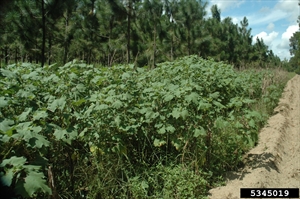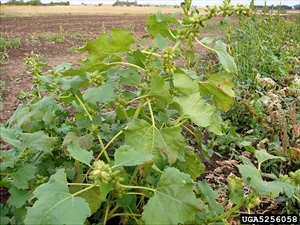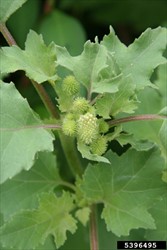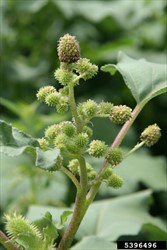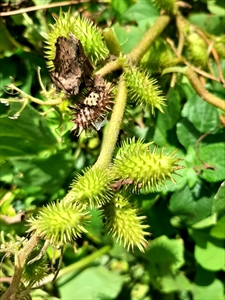- Widespread. Asia, Africa, North America, Caribbean, Europe, Oceania. In Fiji, New Zealand, PNG.
- Forming large stands on disturbed land: grassland-woodlands, water courses, floodplains, dry sandy riverbeds, roadsides, ditches, wasteland. Also, a weed of row crops (soybeans, cotton, maize, peanuts), plantations and pastures. Invasive weediness due to tolerance of soil types, climates, ease of spread.
- Annual, erect, multi-branched stems, up to 150 cm, with short dark streaks, and short stiff hairs. Leaves, opposite (lower), or alternate (upper) along stems, dark green, triangular, up to 20 cm long, margins toothed, and surfaces with bristles. Male flowers in clusters at top of branches, female below with hooked spines. Fruits, brown, hard, woody with two grey or black seeds, flattened on one side
- Spread: burrs, by animals; clothing; water; roadmaking materials; vehicles.
- Biosecurity: high risk of introduction: seeds easily spread.
- Biocontrol: moths, Euaresta aequalis, and Epiblema strenuana; beetles, Mecas saturnina and Nupserha vexator, introduced to Australia, but not yet successful.
- Cultural control: hand weeding, hoeing, slashing or mowing; inter-row cultivation; vehicle hygiene.
- Chemical control: in Australia: 2,4-D; 2,4-D + picloram; glyphosate (and Fiji); fluroxpyr; metsulfuron-methyl; MCPA.
